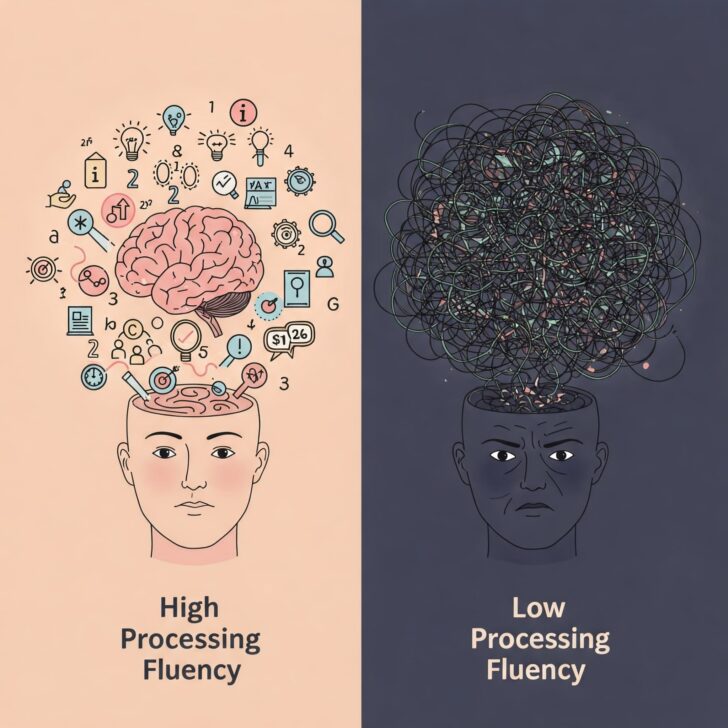
BLOG
2024年10月21日
行動心理カウンセラーやまひろの一言:腕組みの心理を読み解く
「やっぱり拒絶と緊張!!」
相手の腕組みを見て、まず頭に浮かぶのは「拒絶」と「緊張」ではないでしょうか? その直感は、多くの場合、正しいと言えます。腕組みは、基本的には相手を拒絶する仕草であり、自分の身を守ろうとする心理の表れです。
しかし、腕組みの解釈はそれだけではありません。表情や状況、その他の非言語的なサインと合わせて総合的に判断することが重要です。
なぜ人は腕を組むのか? 拒絶の真意を探る
腕組みは、大きく分けて以下の2つの心理状態を示唆しています。
- 拒絶: 相手の意見に反対していたり、話しかけられたくないと感じていたりする場合に、人は無意識に腕を組んで相手との間に壁を作ろうとします。
- 緊張: 初対面の人と話す時や、プレゼンテーションを行う時など、緊張している場面でも腕組みが見られます。これは、不安や緊張感を抱えている際に、自分自身を守ろうとする本能的な行動です。
腕組みは、嘘をついている時にも見られることがあります。これは、嘘をつくことによって生じる心理的なプレッシャーや緊張を軽減しようとするための行動と考えられます。
最新の研究で明らかになる腕組みの心理
近年、脳科学の分野でも腕組みの心理について研究が進められています。fMRI(機能的磁気共鳴画像法)を用いた研究では、腕を組むことで脳の扁桃体と呼ばれる部分が活性化することが分かっています。扁桃体は、恐怖や不安などの感情を処理する脳の部位であり、腕組みがこれらの感情と深く関わっていることを示唆しています。
また、心理学の研究では、腕組みをすることで自信や dominance(支配性)が高まるという報告もあります。プレゼンテーションの前に腕を組むことで、自信を持って発表に臨めるようになるという効果も期待できます。
腕組みをさせないコミュニケーション術
相手の腕組みを防ぐことは、良好なコミュニケーションを築く上で重要です。腕組みをさせないためには、以下の方法が考えられます。
- オープンな姿勢で接する: 笑顔で話しかけたり、相手の目を見て話したりするなど、親しみやすい態度で接することで、相手の警戒心を解きほぐすことができます。
- リラックスできる環境を作る: 静かな場所で話したり、飲み物を用意したりするなど、相手がリラックスできる環境を作ることで、緊張を和らげることができます。
- 共通の話題を見つける: 相手の興味関心のある話題について話したり、共通の趣味の話をすることで、相手との距離を縮めることができます。
- 身体的な接触を避ける: パーソナルスペースに踏み込みすぎたり、必要以上に身体に触れたりすると、相手は不快に感じて腕を組んでしまう可能性があります。
- 肯定的な言葉をかける: 相手の意見に共感したり、褒め言葉を伝えたりすることで、相手の心をオープンにすることができます。
- 質問を投げかける: 相手に質問をすることで、相手は自分の考えを整理し、積極的に会話に参加しようという気持ちになります。
- ミラーリング: 相手の仕草や表情をさりげなく真似ることで、相手との親近感を高めることができます。ただし、やりすぎると不自然な印象を与えてしまうため、注意が必要です。
- 物理的に腕を組めない状況を作る: 何かを持ってもらう、テーブルに手を置かせるなど、腕を組みにくい状況を作ることも有効です。
文化による腕組みの意味の違い
腕組みの解釈は、文化や地域によっても異なります。例えば、日本では腕組みは否定的な意味合いで解釈されることが多いですが、欧米では自信や堂々とした態度を表す場合もあるとされています。
海外の人とコミュニケーションをとる際には、文化的な背景を考慮して腕組みを解釈することが重要です。
まとめ:腕組みは多様な意味を持つ
腕組みは、拒絶や緊張、自己防衛など、様々な心理状態を表す非言語的なコミュニケーションの一つです。相手の腕組みを見たときは、表情や状況、文化的な背景などを考慮しながら、総合的に判断することが重要です。
腕組みをさせないコミュニケーション術を身につけることで、より円滑な人間関係を築くことができるでしょう。
参考文献
- Allan Pease. (2017). The Definitive Book of Body Language
- Joe Navarro. (2018). What Every BODY is Saying
- David Matsumoto and Hyi Sung Hwang. (2011). Reading Faces and Bodies: A Guide to Nonverbal Communication
Decoding Arm Crossing: Insights from Behavioral Psychology Counselor Yamahiro
"Rejection and tension are key!"
When you see someone with their arms crossed, the first things that come to mind are likely "rejection" and "tension." And in many cases, this intuition is correct. Arm crossing is fundamentally a gesture of rejection, a way of protecting oneself.
However, there's more to arm crossing than meets the eye. It's crucial to consider facial expressions, the surrounding context, and other non-verbal cues to accurately interpret the meaning.
Why Do People Cross Their Arms? Unraveling the True Meaning of Rejection
Arm crossing can indicate two primary psychological states:
- Rejection: When someone disagrees with you or doesn't want to be approached, they may unconsciously cross their arms to create a barrier.
- Tension: Arm crossing is common in situations that induce anxiety, such as meeting new people or giving presentations. This is an instinctive act of self-protection when feeling uneasy or nervous.
Crossing one's arms can also be a sign of deception. This is thought to be a way to alleviate the psychological pressure and tension associated with lying.
The Latest Research on the Psychology of Arm Crossing
Recent neuroscience research sheds more light on the psychology of arm crossing. Studies using fMRI (functional magnetic resonance imaging) have shown that crossing one's arms activates the amygdala, the part of the brain that processes emotions like fear and anxiety. This suggests a strong link between arm crossing and these emotions.
Furthermore, psychological research indicates that arm crossing can increase feelings of confidence and dominance. Crossing your arms before a presentation might actually boost your self-assurance.
Communication Strategies to Prevent Arm Crossing
Preventing arm crossing in others can be crucial for building rapport and fostering positive communication. Here are some effective strategies:
- Adopt an open posture: Approach people with a smile, maintain eye contact, and generally project a friendly demeanor to ease their apprehension.
- Create a relaxing environment: Choose a quiet setting, offer refreshments, and do what you can to make the other person feel comfortable and at ease.
- Find common ground: Discuss topics of mutual interest or shared hobbies to establish a connection and reduce the sense of distance.
- Respect personal space: Avoid invading their personal space or unnecessarily touching them, which can make them uncomfortable and lead to arm crossing.
- Offer positive reinforcement: Express agreement with their opinions or offer compliments to create a more receptive atmosphere.
- Ask engaging questions: Encourage active participation by asking questions that prompt them to think and share their thoughts.
- Utilize mirroring: Subtly mimic their gestures and expressions to build rapport. However, avoid overdoing it, as this can seem unnatural and off-putting.
- Physically prevent arm crossing: Ask them to hold something or have them place their hands on a table to make it difficult to cross their arms.
Cultural Variations in the Meaning of Arm Crossing
The interpretation of arm crossing can vary across cultures and regions. While often perceived negatively in Japan, arm crossing can sometimes signify confidence or assertiveness in Western cultures.
When communicating with people from different cultural backgrounds, it's essential to consider these nuances when interpreting arm crossing.
Conclusion: Arm Crossing Conveys Multiple Meanings
Arm crossing is a non-verbal communication cue that can signal rejection, tension, self-protection, and other psychological states. When observing someone with crossed arms, it's important to consider their facial expressions, the context, and cultural factors before drawing conclusions.
By mastering communication techniques that discourage arm crossing, you can foster smoother and more positive interactions.
References
- Allan Pease. (2017). The Definitive Book of Body Language
- Joe Navarro. (2018). What Every BODY is Saying
- David Matsumoto and Hyi Sung Hwang. (2011). Reading Faces and Bodies: A Guide to Nonverbal Communication
Recommend
-

2025年12月04日
3大AIモデルの比較(2025年12月最新版)
-

2025年09月30日
AI生成 交通事故時の簡易相談サイト
-

2025年08月07日
自転車の道路交通法に関して~知らなかったでは済まされない~
-

2025年07月22日
北海道産野菜ベジタボックス 2025年7月版
-

2025年07月17日
未来は、もう始まっている。あなたの仕事を加速させるAIツールを見つけよう!
-

2025年07月16日
WEBマーケティング
-

2025年05月16日
北海道産野菜詰め合わせセット ベジタボックスサブスク7月ごろより(継続サプライズ)
-

2025年04月29日
心理学の「実と虚について」処理の流暢性とは2025年度版














